“Smit Rotterdam” – 22,000 HP strong ocean-going super tug
“SMIT ROTTERDAM” from the Dutch towing company "SMITWIJS".
The Netherlands used to be known as a sea faring nation. Especially ocean going tugs were famous. There were two big firms. Smit in Maassluis and Wijsmuller in IJmuiden. These company's were no friends and constantly fighting for every ship in misery. Who was the first on the scene, who was the first to connect and secure the “No cure-No pay” contract.
Merchant shipping and oil rigs were getting bigger and bigger. To stay ahead of other company's Smit decided to go for more horsepower.
In 1974 the management of L. Smit towing Company, ordered shipyard “De Merwede” to build two ocean going “Super” tugs.
They were to be named “Smit Rotterdam” and “Smit London”.
During 1975 the “Smit Rotterdam” became operational.
These ships were able to tow the largest oil rigs and supertankers over a vast ocean area.
In 1991 the Smit firm began (finely) a closely companionship with the Dutch “Wijsmuller” towing company. It became the “SmitWijs Towage C.V.”
General Information in meters, tonnage, endurance, IHP, storage.
2273 BRT.
Length 74.83 / Width 15.78 / Draft 7.60
Propulsion: Two Werkspoor 9 cylinder diesel engines. Each connected to a four blade adjustable screw. The installed power was 22000 Indicator Horse Power / Top speed 16.5 knots / 650 HP bow screw.
Tow cable(s) of 1300 meters / Three water cannons for firefighting.
70.000 liter of potable water, and the ability to produce another 10.000 liter per day from saltwater
Bunker capacity for propulsion was sufficient for long voyages, without stopping.
After 44 years of service to many owners, in July 2014 it started on its last voyage to Gadani in Pakistan to be scrapped.
If you visit The Netherlands and your interest is tugs, go to Maassluis, located on the river Maas.
This was the operational center from Smit Towing Company.
It locates the “Towing Museum”. With some old tugs in the harbor nearby.
Interesting Note:
It could happen, that on long voyages the tug disconnected itself from the tow and went inside a nearby harbor for resupply.
The tow would float in the right direction on the right ocean stream. After a quick resupply, the tug would “find” the tow, connect and the voyage would be continued.
No Cure No Pay:
Before connecting to the ship in distress, first the No Cure No Pay contract had te be agreed/signed. (see attached link SS Flying Enterprise january 1952 )
If the vessel in distress was being towed to safety, the calculations from the insurance company, containing ship and cargo (checked by the management off the towing office) were paid out to the company that signed the contract. Also the salvage crew received their part. If other tugs helped the tow, also these units and crew received their part
If the ship was lost, it was a big loss for the towing company.
No steaks, but beans and bacon on the menu!
The Heller 1/200 scale model:
Build straight from the box. Full hull in the (molding powder) water.
It shows the tug at anchor (black ball at the foremast). Besides the Dutch flag, it has in top the flag from Barbados. Waiting for the S.O.S distress signal.(radio manned 24/7.)
Crew was allowed ashore after working hours. Equipped with beepers they had to be back in time for departure. To go and make some money for the SmitWijs company.
The towing cable (rope and steel) for the necessary stretch is already positioned on the work deck.
Links:
http://www.nationaalsleepvaartmuseum.nl
http://www.vinden.nl/video/smit_london?s=relevance
https://en.wikipedia.org/wiki/SS_Flying_Enterprise
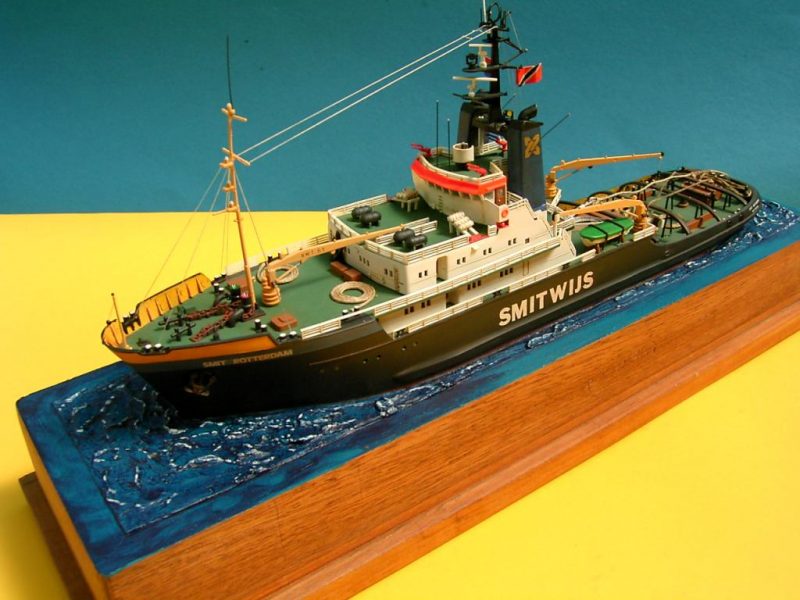
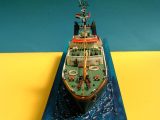
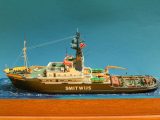
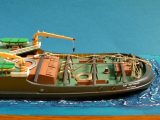
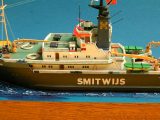
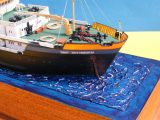
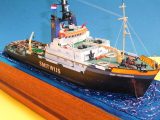
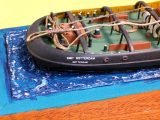
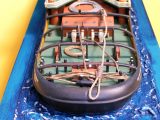
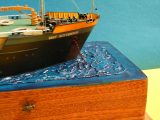

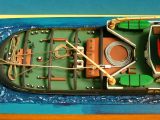
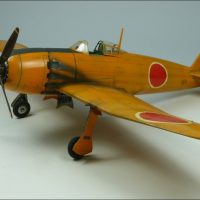

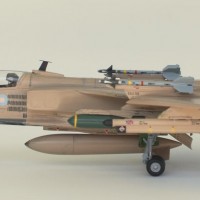

Nicely finished, sir...an excellent build.
Hi there Craig,
You are fast. I was still editing my English.
Thanks for watching.
Full of character. Would look grear in a case on the mantelpiece.
Naturally, meant 'great' - phone keypad in rebellion.
Most definitely a subject a bit off the beaten track, I can't remember seeing that kit completed on any other occasion. It came out very well. Thanks for sharing anad also for the informative story.
Also meant to say the high contrast colours and background for the photos adds much to the result we see here.
Great model, and some interesting backstory. Like it very much!
Beautiful job. So that's where I got the salt in my blood, part Dutch on my mothers side [way back in New Amsterdam].
For Robert,
As mentioned: "was a sea faring nation".
Today, ships are sailing under the flag that gives the company the lowest tax rates. Not to forget, the lowest pay rates for the crew.
No future in that branch.
I think the same can be said for the maritime service here in the states.
Beautifully done!
That's a very nice model Dirk, and an interesting subject.
When I first saw the pictures I assumed it was the old Billings wooden model, but now I know differently. You've managed to replicate the bulk and strength of the original very well.
Hello to all out there,
Thanks for the kind words regarding my (15 Euro) tug model from Heller.
It does not always have to be very expensive to get a good result.
Regards,
Dirk
The Netherlands.
Dirk, marvelous as usual! Well done!
Very nice built Dirk. From my childhood familiair with shipping and ships as I grew up arround the Port of Rotterdam. My father was a shipbuilder and I've worked in transport and logistics for a long time. I know the museum in Maassluis, and every year they have a full weekend with all those great historic tugs, steam and diesel together.
Dirk, beautiful build! You have a talent for them. I remember your Karel Dorman, and when I saw this one, I guessed you were at it again!
Did anyone else notice the "stowaway" in one picture? Ha!
Great model, Dirk! I'm a landlubber, so models like this plus your great write-ups are VERY interesting!